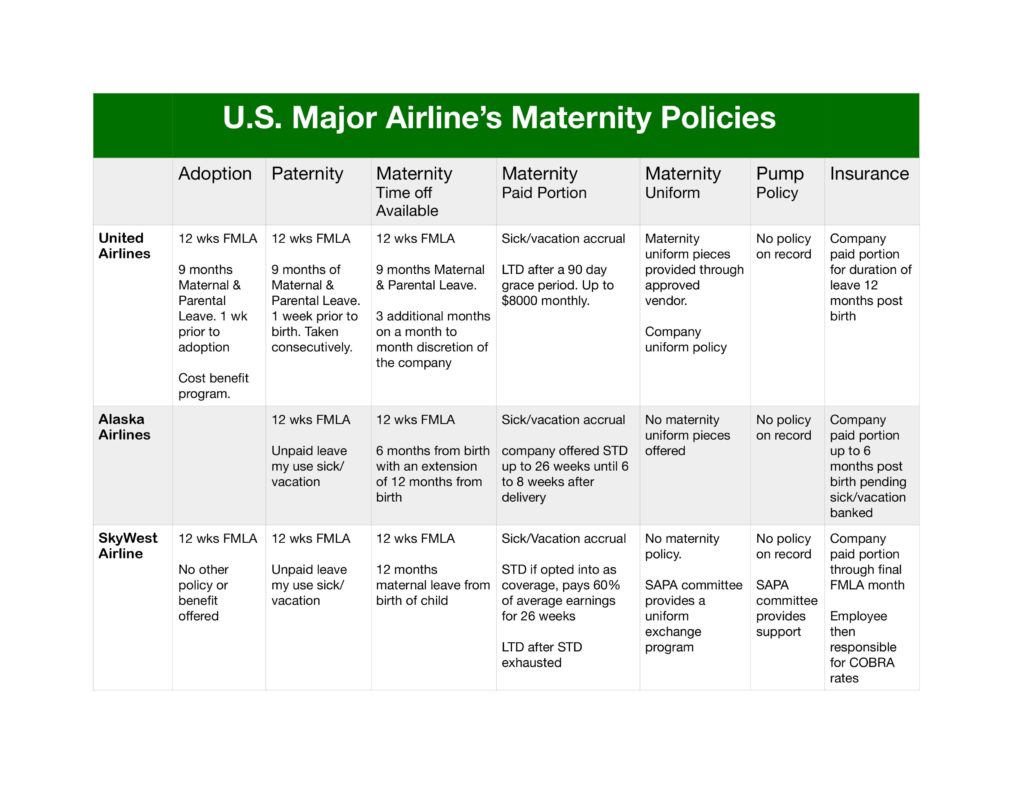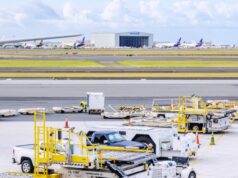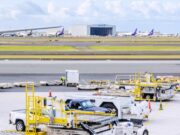
Congratulations – having a baby is an exciting time! Maternity policies and benefits vary widely across different countries and airlines. This article will describe maternity policies and benefits in the United States. Like everything in aviation, planning is critical. When planning for maternity, consider the following: time off, pay, benefits and return to work.
Time-off
Time-off includes any absences and/or leaves from initial pregnancy notification until one year after delivery. During the pregnancy there are a number of reasons pilots may not be fit to fly and therefore choose not to do so. For example, a pregnant pilot may experience morning sickness, fatigue or a high-risk pregnancy. After delivery, pilots are rarely ready to return to work after 6-8 weeks like other new working moms. Further, breastfeeding and pumping is a logistical and medical challenge for new pilot moms. When planning time-off for maternity, be sure to determine what your airline offers in terms of sick time, disability, vacation, maternity leave and personal leaves. In most cases, leave under the Family and Medical Leave Act (FMLA) is available, if eligible.

Pay
Once you have a plan for time off, you need to determine how much of the leave you will be taking is paid and how much is unpaid. Typically, women may use paid sick leave and paid disability benefits for pregnancy. Additionally, your airline may allow you to use earned, unused paid vacation during your pregnancy. If you’re one of the lucky few, your airline has a paid maternity benefit. It’s important to note, most paid benefits terminate 6-8 weeks after delivery. Remember, FMLA is unpaid. Similarly, personal leaves of absence are usually unpaid.
Benefits
Be sure you understand your airline’s healthcare, vision and dental benefits during maternity leave. Most company-paid benefits will remain the same during paid sick leave, vacation and while receiving disability benefits. Similarly, your benefits will remain unchanged while on FMLA. Notably, many airlines place pilots into inactive status while on an extended leave of absence, including maternity. You may be required to pay 100% of your healthcare premiums once you go on inactive status. These premiums can be significantly higher than you were paying while on active status. For example, at Delta, the 2019 Active Employee Healthcare Premium for Gold HSA Family is $373 per month. Whereas, the Inactive Employee Healthcare Premium for the same plan is $1,873 per month. Also, your flight pass privileges and other benefits with your company may change as well.
Return to Work
Ideally, new pilot moms stay home up to a year to breastfeed their newborns. Unfortunately, many pilots cannot afford to stay home because of the loss of income and cost of continued benefits. They return to work as soon as able. Many airlines will allow pilots to return to work as soon as they present a valid class-one medical. Training, if required, will be scheduled and then you are back on the line. Regrettably, aircrew members are excluded from the Affordable Care Act (ACA) which requires employers to provide breaks and mothers’ rooms for new working moms. Moreover, most airlines do not provide guidance or accommodations for pumping pilots. Some airlines have union support. Most often, pilots must rely on female pilot support and mentors from ISA and other similar groups.
Summary
It is possible to combine motherhood with a rewarding flying career. The key to success is planning time-off, pay, benefits and your return to work for each pregnancy. Be sure you fully understand your airline’s maternity policies and benefits so you can plan accordingly. Then, you can focus on a healthy pregnancy, delivery and baby.








































































